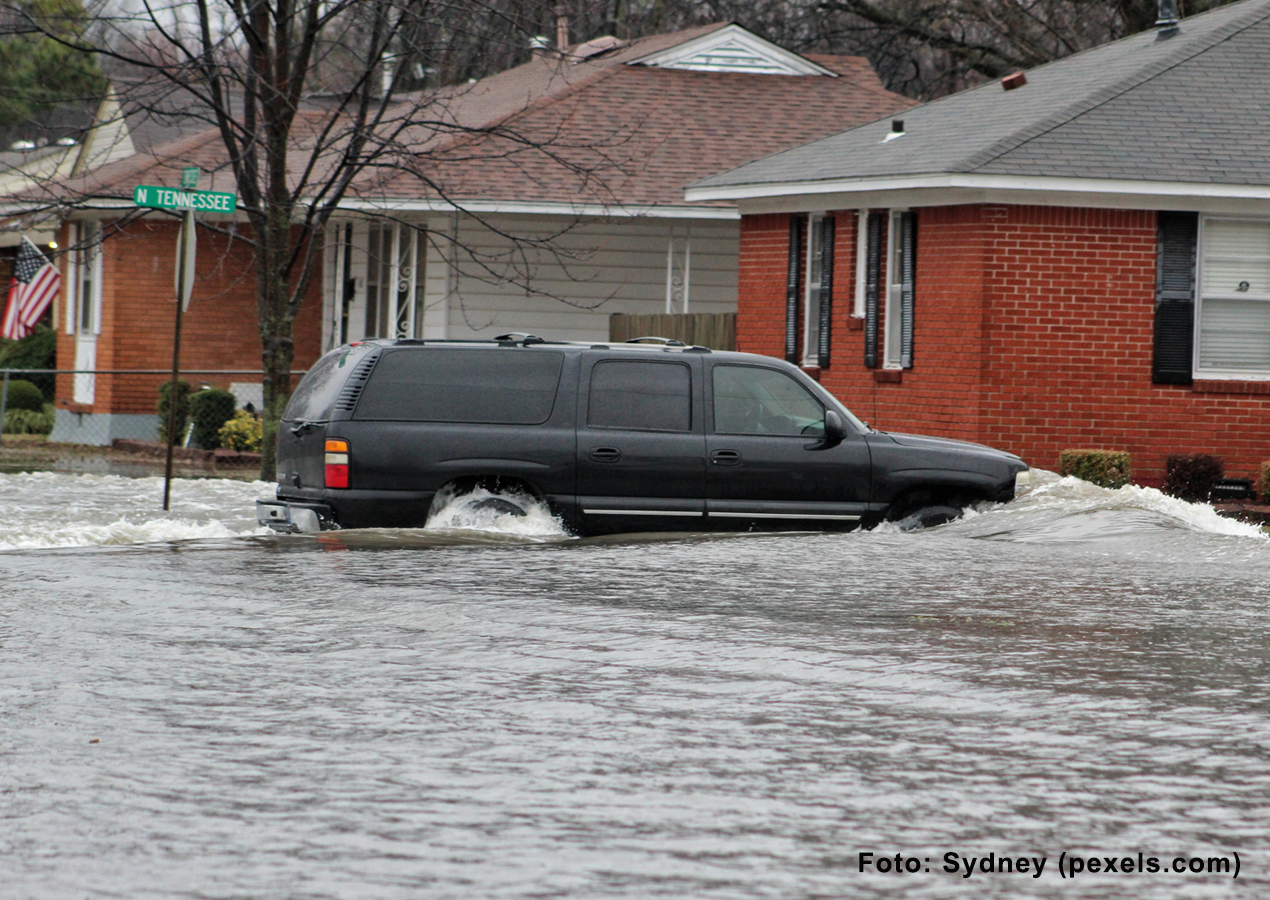Rain Tax, Fiscal Instrument for Flood Control?
Andhika Muchlis & Andre Ryanto Wijaya
|
Monday, 16 March 2020

Flooding once more submerged—rather than saying ‘drowned’— a large part of the Special Region of Jakarta (DKI Jakarta) and a number of capital’s buffer zones such as Bogor, Depok, Tangerang, and Bekasi. This classic disaster—which always takes lives—frequently repeated from time to time without any significant solutions from stakeholders. In fact, this recurring phenomenon is considered "common" by some residents of Jakarta and seems to reduce flooding to just as a "water park" rather than a disaster.
Earlier this year, the Regional Disaster Management Agency (Badan Penanggulangan Bencana Daerah/BPBD) of DKI Jakarta mentioned that flood had caused 19 deaths and negatively impacted 31,232 people in 157 villages. Flood with an intensity of this magnitude is the fifth in Jakarta in the span of the last 20 years. The worst record is the flood in Jakarta in 2007, which killed 48 people and affected 276,333 people (see table).
| 2002 | 2007 | 2013 | 2015 | 2020 | |
| Rain Fall (mm/day) | 168 | 340 | 100 | 277 | 3777 |
| Flooded Neighbourhood | 353 | 955 | 599 | 702 | 390 |
| Flood Area Tergenang (km2) | 168 | 455 | 240 | 281 | 156 |
| Number of Evacuees (person) | 154.270 | 276.333 | 90.913 | 45.813 | 31.232 |
| Death (person) | 32 | 48 | 40 | 5 | 19 |
| Receeding time to 95% (day) | 6 | 10 | 7 | 7 | 4 |
(Source: BPPD DKI Jakarta, bisnis.com, proceed)
In addition to the factor of global warming which increases the intensity of rainfall, flood in Jakarta is also closely related to topographic conditions. The DKI Jakarta Provincial Government states that 40% of the Jakarta area is low-lying, the altitude of which is below the sea level, and crossed by 13 rivers from Bogor, Depok, Tangerang, and Bekasi regions. This condition causes the area of Jakarta to become the estuary of the 13 rivers and is vulnerable to flooding if river siltation occurs.
The very limited availability of Urban Open Space (Ruang Terbuka Hijau/RTH) has also become another problem against flood prevention in Jakarta. Based on data from DKI Jakarta Forestry, Landscape, and Cemetery Department, the current area of urban open space in Jakarta is only 9.98% of the total area. This figure is below the minimum requirement for urban open space availability, which is 30% of the total area as stipulated in Law Number 26 of 2007 concerning Spatial Planning.
The minimum urban open space requirement that is not achieved—not only in Jakarta—is a consequence of economic development policies that often hit the green belt. For example, local government policies that allow the conversion of water absorption areas into buildings, eliminating small reservoirs, and a series of other anti-environmental policies that affect urban planning
Spatial planning for the drainage system that has not been optimal is also often highlighted by environmentalists relating to flooding. Jakarta, for example, still maintains the drainage system of colonial heritage and has not changed up to this millennial era. The drainage system in Jakarta is estimated to only functioned around 33% as on top of most of the area stands residential and buildings that are not connected with premier, secondary, or tertiary drainage. This condition is further worsened by excessive exploitation of groundwater which, according to the records of the Indonesian Institute of Sciences (Lembaga Ilmu Pengetahuan Indonesia/LIPI), causes land degradation in Jakarta on average of 25cm each year.
The Central Government and the DKI Jakarta Government have made a number of efforts to deal with floods. Apart from the debate over the term of normalization or naturalization, at least there has been an effort from the relevant authorities to arrange the flow of the river, as well as to improve the settlement area on the riverbank. The fact that its implementation has not been maximized is a story for another time.
Alternative Solution
A radical alternative solution might be needed to maximize the work of the government, together with the society, in tackling and mitigating floods. If necessary, the government can learn from the policies of subtropical countries that have much higher rainfall intensity than Indonesia, especially Jakarta. One of the policies that can be copied is earmarked tax or the use of taxation instruments in overcoming the problem of flooding. Earmarked tax is a type of taxation levied to achieve certain goals set by the government. The levied taxes are then fully used to finance activities related to their purpose and designation.
A concrete example of the application of earmarked tax in relation to flood mitigation is rain tax, which is commonly applied in subtropical countries as a preventive and curative measure in facing flood disasters. Rain tax is a tax collection system imposed on waterproof properties or those that cannot infiltrate water because they use materials such as asphalt, concrete, and tile. A number of countries that have implemented rain tax include Germany, Italy, and a number of states in the United States. Several factors being the consideration in the implementation of rain tax in many subtropical countries are high rainfall intensity, increased demographics, river degradation, aging infrastructure, and increasingly limited urban open spaces. These conditions then forced the government to go the extra mile in mitigating floods, namely by building a capable drainage system and ensuring the availability of urban open spaces that could infiltrate water.
The German Government pioneered the rain tax policy in 1990. Germany set a tariff of USD2.6 or equivalent to IDR36,360 per m² (exchange rate of IDR13,984/USD) for business or residential properties that cannot absorb water. In accordance with its earmarking, all proceeds from the collection of rain tax are then allocated by the German Government to fund various flood prevention programs and projects, such as to improve the quality and maintain the drainage, as well as flood mitigation research costs.
The disincentive policy is also balanced with the provision of incentives for people actively contributing to building rainwater collection systems such as parks, gardens, yards, and so on. By applying a deduction tax mechanism, the German Government indirectly invites its people to participate in mitigating flood disasters. As a result, as many as 1.8 million families had built rainwater reservoirs and Germany managed to save 110 million liters of water in 2009.
The combination of those fiscal policies also has quite an impact on businesses engaged in the property. This is because there are consequences in increasing the tax burden for the owners of assets who do not care about environmental preservation. Conversely, if they make water reservoirs, there will be savings that can be obtained according to the scale of water absorption.
Duplication and Challenges of Rain Tax
Indonesia, especially Jakarta, may follow the example of rain tax policies in Germany and other subtropical countries. In the context of flood control in Jakarta and the surrounding areas, this earmarked tax option might be more appropriate if it is executed by the Regional Government, by promoting the principle of equity in its collection. The regulation and determination of the rate may be determined by the Central Government, but the implementation is the authority of the Regional Government. This rain tax policy option may be accommodated through the Regional Tax and Regional Retribution (Pajak Daerah dan Retribusi Daerah/PDRD) policy, a number of clauses of which are being amended through the Omnibus Law taxation scheme.
However, the compliance cost of taxpayers is the biggest challenge in applying the rain tax in Jakarta or other regions. This is because the tax payable burden of the public will be increasingly inflated with the collection of this new tax type. Unless, the government can convince the public that there will be a fair compensation from the increased tax burden, by ensuring the allocation of rain tax revenue is maximized according to its designations, which are tackling and mitigating flood disasters. The correlation between the implementation of rain tax with water savings, reduced use of groundwater, increased green space, and most importantly no more flooding, must be proven.
Rain tax is an alternative idea that we offer for the government to work together with the community to cope with floods rather than campaigning “killing two birds with one stone”. This is because disaster is not a place to raise funds, but a momentum to empathize and find solutions together. (AGS/KEN)
*The writer is a student at University of Indonesia Faculty of Administrative Sciences (FIA), a member of Kelompok Studi Ilmu Administrasi Fiskal (KOSTAF) University of Indonesia, and also a freelance researcher at MUC Tax Research Institute.
*This article is a collaborative project of KOSTAF University of Indonesia and MUC Tax Research Institute, published in CNBC Indonesia, 13 March 2020.
Disclaimer! This article is a personal opinion and does not reflect the policies of the institution where the author works.


